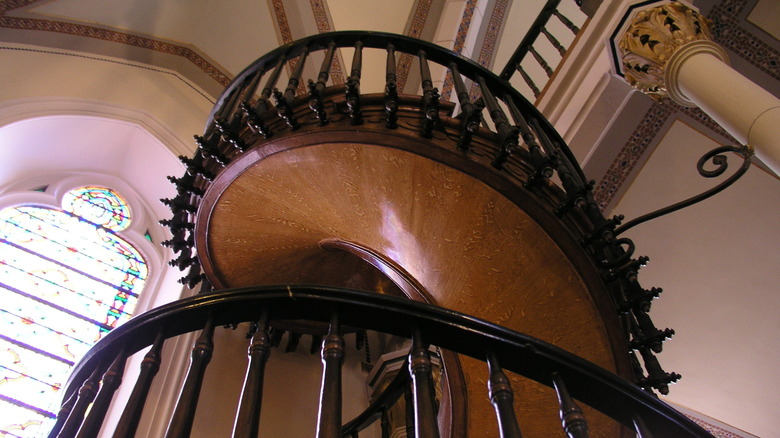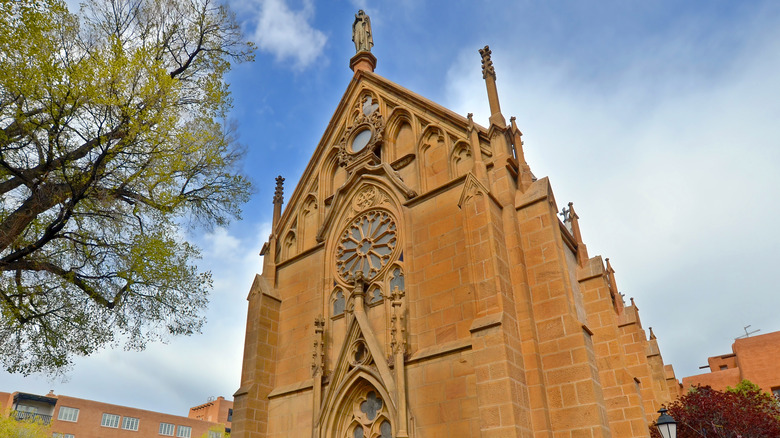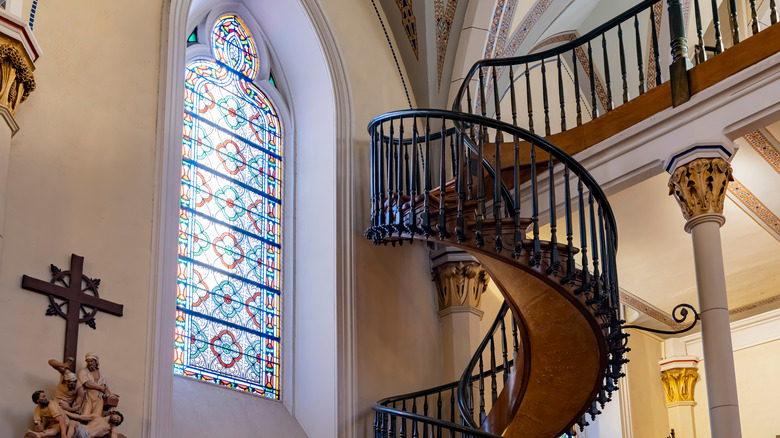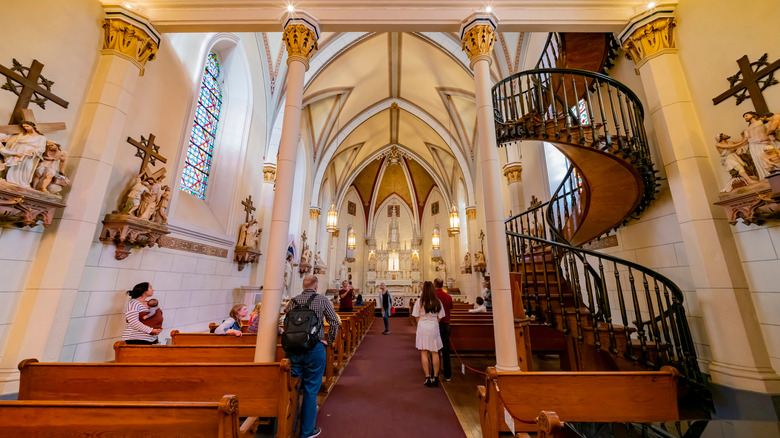The Miracle Of The Loretto Chapel Staircase Explained
The Loretto Chapel Staircase, also known as the stairway from heaven, is a frequently cited miraculous tale. According to Historic Mysteries, the legend states that when Loretto Chapel in Santa Fe, New Mexico, was nearing its completion in the late 1880s, the architect died before he was able to design a staircase that could access the choir loft.
When other carpenters were brought in to fix the issue, they all concluded that it would be too difficult, if not impossible, to construct a staircase in the small space. Instead, they recommended that the nuns who tended the chapel use a ladder to reach the choir loft.
Hoping for another solution, the Sisters made a novena — a prayer made nine days in a row — to St. Joseph, the patron saint of carpenters. The legend claims that on that ninth and final day, a man arrived with a donkey and toolbox and offered to help with the staircase. As described in History of Yesterday, he did not give his name and had one condition: that he be alone when he worked in the chapel.
The mysterious carpenter was not only able to construct a staircase, despite the fact that other men had believed it to be impossible, but also managed to do so in the space of days or a few short months, depending on the source. But the story doesn't end there.
Things get odd with the staircase and the stranger
After the lone carpenter completed the staircase, he allegedly disappeared before the Sisters could pay him or find out his name. The legend claims that they even ran a newspaper ad to find him, to no avail.
But the man who constructed the staircase was not the only mystery. The wood that was used was completely unknown and the construction was a marvel. According to the official website of the Loretto Chapel, the spiral steps have two full 360-degree turns and yet don't appear to have a visible source of support. Moreover, it was created solely with wooden pegs, with neither nails nor glue, and out of a material that is either completely unknown or not native to the region.
The combination of the mysterious builder, perplexing construction, and the unknown wood led the Sisters to believe the staircase was an example of divine intervention and credited St. Joseph, the foster-father of Jesus Christ, as the man who had helped create it.
However, there might be some more terrestrial explanations
Though many, especially those of the Catholic faith, look at the stairs as an example of a miracle, historians and architects have found some more terrestrial potential explanations.
In a column from The Washington Post, a builder noted that while the construction of the staircase was a "mind-boggling" feat, especially for the time period, he believed that it is supported by beams that had been twisted into a helix — meaning the construction follows the natural law of physics. Another explanation was given by wood technologist Forrest N. Easley (via Snopes). Easley believed that "the staircase does have a central support" which consists of an inner wood stringer of such small radius that it "functions as an almost solid pole."
Moreover, historian Mary J. Straw Cook claimed to have discovered the identity of the builder: François-Jean Rochas. According to History of Yesterday, Rochas was a master craftsman from France who belonged to a secret society of carpenters. In his obituary in the Santa Fe Daily New Mexican (posted at the Library of Congress) he was credited as the man who built the staircase. History of Yesterday adds that he was listed in the chapel's financial ledger as receiving payment for "wood."
Last but not least, the type of wood could simply be "extinct," as hypothesized by The Washington Post's expert. Snopes also noted that a small sample suggested that it was in the spruce family, though a larger sample would be needed to confirm the exact findings.
Science and faith don't have to be mutually exclusive
Even though modern science and research have given some likely explanations for most of the mystery behind the Loretto Chapel staircase, it doesn't explain everything. For starters, the claim that Rochas was the mysterious carpenter is still conjecture and doesn't explain why he was only credited upon his death in one obituary instead of when a major newspaper had run an advertisement to find his identity.
Moreover, it is not clear exactly how or why Rochas, a Frenchman, found himself in what was then a small town in the American Southwest. While it is possible that he had been commissioned to build the staircase and the Sisters were simply unaware of his service, as Mary Straw Cook believes, it hasn't been definitely proven. In addition, the construction of the staircase, while adhering to the natural laws of physics, is still described by many builders and architects as a feat of wonder.
As the former Archbishop of Santa Fe, Michael Sheehan, once said about the matter, "It will always be referred to as a miraculous staircase. It was an extraordinary piece to have been done in its time" (per "Mysterious New Mexico: Miracles, Magic, and Monsters in the Land of Enchantment").



